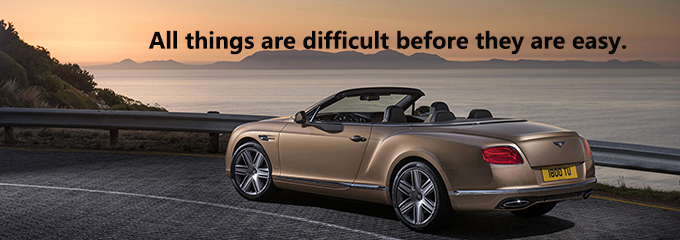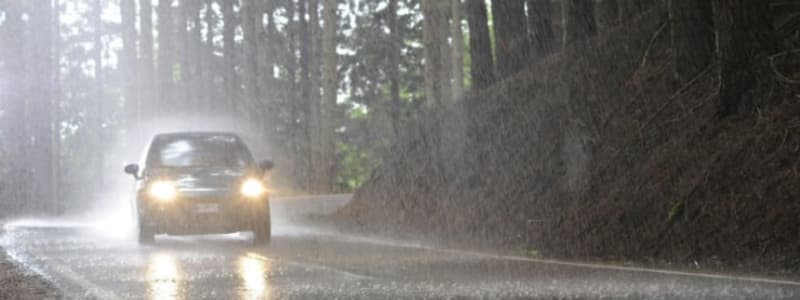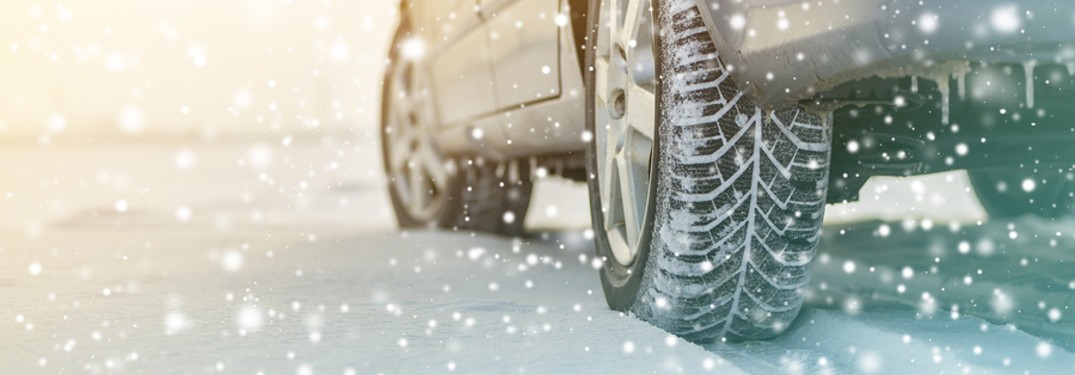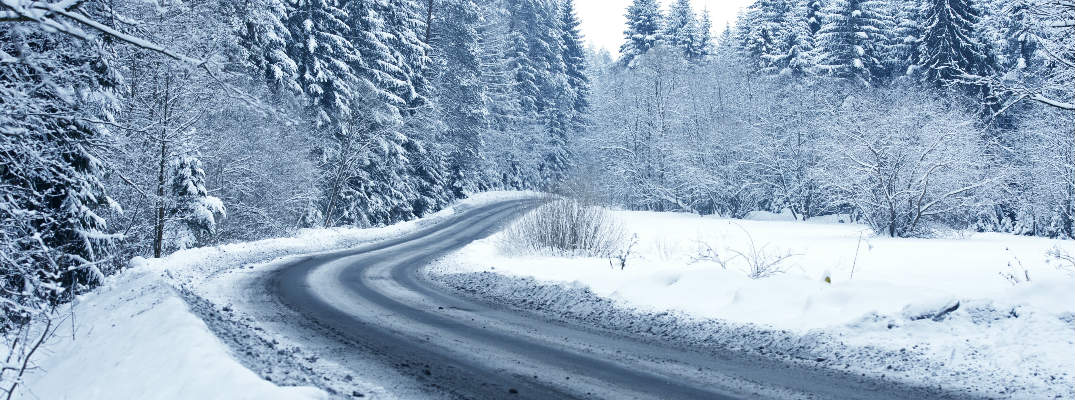
All drivers include some new ones, know that we should drive carefully and slowly in the rain and snow. Slippery roads increase the probability of traffic accidents. So what exactly should we pay attention to? Are there any special tips that we should take into account? Let's take a look.
First of all, let's talk about the main points to note when driving in the rain. There are three main dangers of driving in the rain. The first one is that the rain and mud can make the wheels slip. The second one is that water in the exhaust pipe into the water makes the engine stall. The third one is that the rain makes the brake system malfunction.
1. Braking in the rain should be advanced
The maximum braking distance on muddy roads can be three times that of normal roads! The brakes can't work properly on rainy days. So slow down and brake in advance.
2. Do not lower tire pressure
Some drivers lower the tire pressure a bit whenever it rains. They hope to increase the contact area between the tires and the ground to prevent skidding. This is exactly bad behavior. Increasing the contact area may reduce the unit area of the tire pressure on the ground.
As a result, the force of the water film between the tire and the ground is weakened so that the tire is more likely to skid. Therefore, reducing tire pressure can not be anti-skid. On the contrary, you should increase the tire pressure instead.
3. Cars are more likely to slip when the road isn't completely wet
The tread can effectively drain away the water, but it can't effectively drain away the mud. When it just rains, the dust on the road has not been washed away by the rain.
After the dust absorbs the rain, it turns into a colloidal mud film, making the tires more likely to skid. So take care when it has just rained and the road is not completely wet.
4. When you have poor vision, stop the car
Driving in heavy rain with poor vision is the biggest hidden danger. Even if the wipers swing at high speed in a rainstorm, they can't get rid of the rain on the glass, making it impossible for you to see clearly ahead.
At this point, you'd better park on the side of the road and wait. In the meantime, turn on the double flashing lights.

5. Stay in the car when it thunders
Even if lightning strikes the car, the current will be transmitted to the ground by the car body. People inside the vehicle are safe. But windows must all be closed tightly. The radio antenna must be put away.
6. Take care when passing waterlogged roads
When passing through a waterlogged road, observe other vehicles and make sure to avoid deep potholes and other obstacles.
When the water floods the exhaust pipe, don't let the water get into the pipe. For this reason, you must put on a low-speed gear before entering the water and hold the throttle steady to drive past in a straight line at a constant speed.
To prevent the exhaust pipe from entering the water, you cannot loose the accelerator after entering the water. Don't change gears in the middle to prevent the drive wheels from losing traction. In order to reduce the resistance on the road, keep an even pace and straight driving.
If the water gets into the exhaust pipe because of loosing the accelerator, or even worse, water gets into the cylinder, you must not start up again. At this time, wait for the rescue.
After the car passes through a waterlogged road or drives in a rainstorm, water in the brake friction pads can make the brakes fail. You can use the method of stepping on both the gas pedal and the foot brake at low speed to let the brake pads heat up and drain the water.
7. Tips for automatic transmission vehicle wading
When the water level exceeds the exhaust pipe, the critical points for automatic cars wading are the same as for manual vehicles.
The specific operation is: hang 2nd gear. Step on the accelerator. Fix a larger amount of fuel until the water gets out. Once you need to slow down, brake the car. It ensures that the water will not enter the tailpipe. The vehicle can be driven smoothly through the waterlogged road.
8. Drive through muddy areas
When passing through muddy areas, you have to pay attention to two things: to prevent slipping and to prevent sinking. So it helps if you drive according to the ruts of the previous car. Before entering the muddy area, first, shift to low-speed gears.
Don't change gears in the middle. Otherwise, the car will instantly lose power and stop. Keep the car running in a straight line at a uniform speed. It's hard to start again.
In case you get stuck in the mud, do not take the risk of stepping on the gas pedal. Otherwise, the drive wheels will only make the car sink deeper and deeper.

If there is no other pad wheel stuff, you can get the air out of the slippery tires so that the tires are soft and deformed. It increases the friction of the grip. After the engine starts, hang 2nd gear, start slowly, you can pass the muddy area smoothly.
If only one side of the tires is slipping, pull the handbrake lightly and increase the throttle. Because of the handbrake, the idling wheel will stop turning. On the contrary, the other side of the wheel increases the driving force, which makes the car possible to drive out of the mud.
Next, we will talk about what to pay attention to when driving on a snowy day. There are two main driving difficulties in the cold winter. One is the low temperature and challenging to start. Second, the road is slippery. The direction and brakes are easy to lose control.
1. Remove frost and snow before driving
Clear the frost and snow from the front and rear windshields, light covers and mirrors. Clean the snow on your shoes before getting into the car. The point is that the brake pedal should not be slippery with snow and ice. Then check the antifreeze, oil and tires.
2. Start the car in extremely cold weather
Step on the clutch in the neutral position. Do not step on the throttle. If you can't start the car with instantaneous ignition, try at least three times each interval of 10 seconds or more. We do this to start the lubrication system.
After starting the car, still press the clutch in the neutral position. Warm up the engine at idle speed. After one minute, release the clutch.
If it doesn't work, press it again for a while. After starting the engine, release the clutch and continue to warm up the engine at idle speed for 1-2 minutes.
If it still doesn't work and the battery is dead, stop fighting. The battery can not comply with its duty. There are three options. The first one is to borrow electricity from other cars to ignite. The second one is to change the battery. The third one is to tow it to the repair shop.
3. Start running on snowy and icy roads
When you want to get the start on a hard and slippery icy road, put it in 2nd gear. Step on the pedal slightly. Lift the clutch to the linkage and stop. Continue to lift it slightly. If the car moves, continue to lift it. Step down the pedal slowly and go.
If the wheels slip and can't run, depress the clutch pedal. Change the gear to 1st position. Then lift and depress the clutch again and again. Let the car sway back and forth. Gradually expand the amplitude of swaying.

After repeating this process a few times, at the moment that the car sways forward, lift the clutch pedal and start moving. If you still can't get going, then see how far back the car is. Back up a little and try again. It often goes with success.
Finally, if you still can't get moving, you have to clear the snow and ice under the drive wheels. This can be a bit of trouble.
4. Get moving on soft snow
If you want to get moving when the accumulated snow reaches 10 cm or more, hang the 2nd gear. Step on the pedal slightly. Lift the clutch and start slowly.
The point is to let the wheels turn slowly. Do not turn fast. If you operate as usual, the wheels will slip and idle. The car can not get moving.
If the car slips in the snow and can not get going, back up a little and try again. If the car really can't move, it has to be pushed or clear the snow under the drive wheel.
5. Low speed
When the vehicle is running, the speed is controlled at about 20-30 km/h on smooth roads without certainty. And the speed can be up to 40 km/h when it enters the normal road with ruts.
It can normally run when the road is without snow. But you should pay attention to the possible sudden appearance of snow and ice at all times.
6. Slow fueling
When driving on smooth snowy and icy roads, refueling should be light and slow. Otherwise, the wheel slips and the direction may lose control.
7. No neutral gliding
When driving on snowy and icy roads, it is not allowed to slide in neutral. Especially when going downhill, be sure to hang low-speed gear beforehand and drive steadily.
8. Slow down tactfully
When driving on snowy and icy roads, you can't rush to step down the pedal and brake the car when reducing from high speed to low speed. The method of gradual gear reduction to decelerate is OK.
Use the braking force of the engine's low-speed gear to decelerate. The speed is very slow before you can release the pedal and give a brake.
If you don't know how to brake on icy roads and lift the throttle and step down the pedal. Things may not work out as planned.

9. Slow steering
Steering should also be slowed down at first. Increase the turning radius appropriately by slowing down the steering wheel. The steering operation should be even and slow. The wheels won't turn. They will slip and lose directional control.
10. Drive on the trench
Choose to drive down a groove or rut in the snow and ice. At least have one wheel in the groove or rut to prevent side slipping. Try not to go where there are no ruts covered by heavy snow.
11. Maintain distance between cars
The car may slide irregularly at any time on snowy and icy roads. It would help if you tried to stay away from other vehicles as much as possible to take precautions.
12. How to slip out of control
To get rid of the uncontrolled skidding on icy roads, instead of stepping on the brakes, step on the gas pedal and use intermittent refueling to boost speed. As a result, the drive wheels can find the point of action, thus restoring the ability to control the direction.
Looking for more information about vehicles and engines? Come to visit Delcoribo. Take a look online. If you want to share a suggestion, just contact us.
 Lauritz Carolsfeld
Lauritz Carolsfeld  November 25, 2021
November 25, 2021